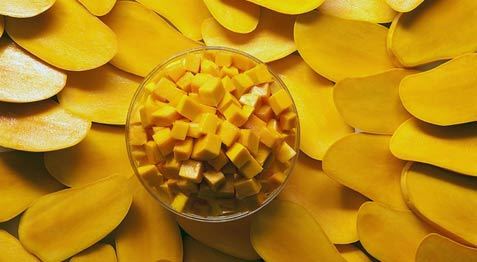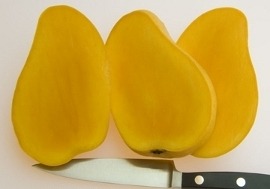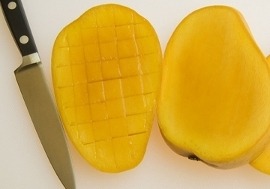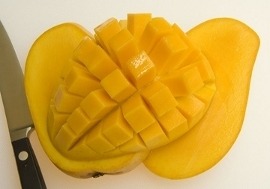
Mangoes have been my favorite piece of fruit since I was little; I remember constantly asking my parents to buy mangoes at the store. We would watch them ripen on the counter, turn a brilliant color and wrinkle a bit before we cut in and enjoyed. The process was almost as fun as the eating! I was living in Arizona as a boy when I first developed my love for mangos – I even planted the pit to see if I could grow my own tree (unsuccessfully of course). They have a flavor unlike any other fresh fruit.
Mangoes are native to South Asia, near eastern India. A distant relative to the pistachio and the cashew, the mango has traveled the globe, grown in the Middle East, Africa, Brazil, Mexico, and even the United States. This rapid global growth has made it one of the most popular fruits in the world. This popularity has recently come to the United States, where the mango is becoming a staple item on many shopping lists.

As with many produce items, there is one variety of mango that is second to none; a variety that will win the heart of any non-mango eating person around. I am referring to the Champagne mango. The Champagne mango is of the Ataulfo variety and is the most pampered and carefully selected mango in the world. This variety was developed in the Mexican state of Chiapas and I promise if it is properly ripened, the Champagne mango will treat you to a flavor you have never experienced before.

As you can see from the ripening guide below, Champagne mangoes are best left on the counter until they are a beautiful golden color with a few wrinkles visible in the skin.

At this point, they are powerfully sweet with a texture like butter: smooth, soft and almost melting in your mouth. Its uses are endless, but my favorite is as a dessert. The common post-meal sweet tooth is easily satisfied with this sweet and healthy alternative.
The Champagne mango is a seasonal item lasting from the middle of March through July. Pick-up your Champagne mangos at Lunds or Byerly’s and discover something new. You just might get hooked!
Check out this easy guide to cutting your mango! It is a good reference for all mangoes, not just the Champagne.

Champagne® mangos have a thin pit in their core. When you slice them, be careful to cut slightly off center so you do not to cut through it.

1. Start by holding the mango with the smaller end facing up and stem-side down. Cut the mango in half by slicing off its sides. There will be a little “meat” on the pit of the mango. You can use your knife to slice it off and then discard the pit.

2. Use a knife to make slices along the length of each mango half, then again across to make a crisscross pattern. Just be careful not to cut through the skin. TIP: At this point, you can take a spoon and scoop out the cubes, or, you may follow Steps 3 & 4.

3. Holding a half mango, use your finger to press gently on the skin, pushing the mango cubes out.

4. Slice cubes off with a knife, or scoop out with a spoon before you push the cubes out. Discard the skin.
Colin Lyons, produce buyer





